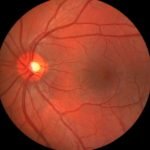Microbial Origins of Fibromyalgia
Alex Vasquez, DC, ND, DO, FACN
For the accurate understanding and effective treatment of any disease, all components of the disease should first be integrated into a cohesive and consistent model that explains all aspects of the disease, including risk factors, pathophysiologic findings, and responses to treatments. For fibromyalgia (FM), the most cohesive model centers on the disease’s genesis in the GI tract, resulting from overgrowth and/or imbalance of luminal bacteria. This short article will present gastrointestinal dysbiosis as the GUT – grand unified theory – of all aspects of fibromyalgia, based on previous and recent reviews by this author.1-5 The pathophysiology of FM is illustrated in Figure 1, and described in the sections that follow.

Figure 1. A Simple Integrated Model of Fibromyalgia (Illustration by Vasquez A, Inflammation Mastery, 4th ed (ichnfm.org; 2016). Image of brain by IsaacMao per Flickr.com via creativecommons.org/licenses/by/2.0. Image licensed to NDNR. No other use, replication, or derivation permitted without written permission from the author.)
1) Dysbiosis in FM
Patients with fibromyalgia have high rates of gastrointestinal dysbiosis in proportion to the severity of musculoskeletal pain.
Small intestine bacterial overgrowth (SIBO) – also referred to as “intestinal bacterial overgrowth” or simply “bacterial overgrowth” – provides the single best model for explaining the clinical and pathophysiological manifestations of FM, as well as irritable bowel syndrome (IBS). Although underappreciated by many clinicians, SIBO is common in clinical practice, affecting, for example, approximately 40% of patients with rheumatoid arthritis, 84% of patients with IBS, and 90-100% of patients with FM. In a study of 42 FM patients, all 42 patients showed laboratory evidence of SIBO, and the severity of the intestinal bacterial overgrowth correlated positively with the severity of the fibromyalgia, thus indicating the plausibility of a causal relationship.6
The links between FM and IBS are also strong; many IBS patients meet strict diagnostic criteria for FM, and many FM patients meet strict criteria for IBS. Lubrano et al7 showed that FM severity correlated with IBS severity among patients who met strict diagnostic criteria for both conditions. The high degree of overlap between these 2 diagnostic labels suggests that these conditions are 2 variations of a common pathophysiological process – SIBO.8 SIBO causes altered bowel function, immune activation, and visceral hypersensitivity, and it is the best causative explanation for the clinical and pathophysiological manifestations of IBS. For more details and citations, see the excellent review by Lin, published in JAMA in 2004.9 IBS is characterized by visceral hyperalgesia (hypersensitivity to pain), just as fibromyalgia is characterized by musculoskeletal hyperalgesia.
Given this strong evidence indicating that IBS is caused by SIBO and that IBS and FM are variations of the same pathophysiological process, it is reasonable to conclude that SIBO may cause FM. SIBO is highly prevalent in FM. Several studies6,10-13 have shown that 90-100% of fibromyalgia patients have evidence of SIBO; such relationships imply causality and must be integrated into any science-based model of fibromyalgia. As generally expected with GI dysbiosis, FM patients show evidence of increased intestinal permeability, so-called “leaky gut.”10
Successful treatments for GI dysbiosis include monotherapy with berberine from Berberis vulgaris14 and/or Origanum vulgare (emulsified oil of oregano, time-released for proper dispersion)15 and combined use of Artemisia dracunculus, Tinospora cordifolia, Equisetum arvense, Thymus vulgaris, Pau d’Arco, Anethum graveolens, Brucea javanica, Pulsatilla chinensis, Picrasma excelsa, Acacia catechu, Hedyotis diffusa, and Achillea millefolium.16
2) Microbes & FM Symptomatology
Microbial molecules from the gut account directly and indirectly for nearly all of the clinical manifestations of fibromyalgia.
Bacterial lipopolysaccharide (LPS) and other antigens absorbed from the intestine during SIBO contribute to a subclinical inflammatory state that results in pain hypersensitivity and increased cytokine release, both of which are characteristics of fibromyalgia. In animal models and in human research studies, exposure to LPS has been shown to increase the brain’s sensitivity to and perception of pain.
Immune-mediated and inflammation-mediated pathways that promote pain sensitivity and pain perception include increased production of nitric oxide with increased production of prostaglandins and cytokines, resulting in the sensitization of peripheral and/or central neurons to pain perception/transmission. In support of this concept, Lin (mentioned above) wrote, “The immune response to bacterial antigen in SIBO provides a framework for understanding the hypersensitivity in both fibromyalgia and IBS.” A 2008 paper by Othman, Agüero, and Lin17 stated, “…a recent animal study demonstrated that exposure to endotoxin [aka LPS] increased the production of prostaglandins and simultaneously decreased nitric oxide production, resulting in inflammatory hyperalgesia … These observations suggest that SIBO is a common feature in both [IBS and FM] disorders and that altered gut microbiota in SIBO may play a role in the induction of somatic or visceral hypersensitivity, with affected patients meeting the diagnostic criteria for IBS, fibromyalgia, or both disorders.”17
3) SIBO & CNS Muscle/Mitochondrial Toxicity
Small intestinal bacterial overgrowth leads to systemic absorption of toxins that impair brain/nerve and muscle/mitochondrial function.
SIBO is associated with overproduction and absorption of bacterial cellular debris (eg, LPS, bacterial DNA, peptidoglycans, teichoic acid, exotoxins) and anti-metabolites – substances which are directly toxic to cellular energy/ATP production and muscle and nerve function – such as D-lactic acid, tyramine, tartaric acid, and hydrogen sulfide (H2S).
Intestinal gram-negative bacteria produce endotoxin (LPS), which impairs skeletal muscle energy/ATP production. Endotoxin also raises blood lactate under aerobic conditions in humans.18 Thus, via direct and indirect effects on cellular metabolism, chronic, low-dose, bacterial LPS exposure can result in impaired muscle metabolism and reduced ATP synthesis via impairment of mitochondrial function.19 Intestinal bacteria also produce D-lactate, a metabolic toxin in humans; SIBO often results in variable levels of D-lactate acidosis, severe cases of which can progress from fatigue and malaise to encephalopathy (ie, confusion, ataxia, slurred speech, altered mental status) and death.20
Supporting the proposal that bacterial overgrowth with D-lactate-producing bacteria is a contributor to the chronic fatigue syndromes including fibromyalgia is an excellent study published in 2009,21 showing that patients with chronic fatigue syndrome (CFS) have intestinal overgrowth of bacteria that produce the toxin D-lactate; specifically the research showed that these chronic fatigue patients have a 7-fold increase in D-lactate-producing Enterococcus and an 1100-fold increase in D-lactate-producing Streptococcus. Energy/ATP underproduction and lactate overproduction cause muscle fatigue and muscle pain.
An additional cellular toxin produced by intestinal bacteria is hydrogen sulfide, which causes DNA damage22 (noted previously to be increased in fibromyalgia patients) and impairs cellular energy production, a finding relevant to, but not limited to, the pathogenesis of ulcerative colitis.23,24 Bacteria and yeast in the intestines produce H2S, which can bind to the mitochondrial enzyme cytochrome c oxidase (part of Complex IV of the electron transport chain), thereby impairing oxidative phosphorylation and ATP production. This may partly explain the association of GI dysbiosis and SIBO with conditions such as CFS and fibromyalgia.25
Mitochondrial dysfunction in muscle leads to the cellular/cytologic and histologic/tissue changes that are typical and well documented in cell and muscle samples of patients with FM.26,27 These peripheral (eg, non-brain) changes in muscle also prove beyond any doubt that fibromyalgia is not a “brain disease” or solely a “disorder of pain processing.”
Oral supplementation with coenzyme Q10 (ubiquinone) has repeatedly been proven to be the most effective mitochondrial-supportive nutritional intervention in FM.26,28
4) Inflammogens, Microglial Activation & Pain
Central sensitization in fibromyalgia is caused by microbial debris and secondary metabolic and inflammatory effects.
As a result of SIBO, FM patients suffer increased sensitivity to pain due to heightened sensitivity of the brain and spinal cord, as well as from peripheral sensitization and impaired muscle function due to the previously detailed mitochondrial dysfunction. SIBO leads to intestinal absorption and systemic distribution of low levels of bacterial endotoxin (endotoxemia) and other inflammation-generating molecules (“inflammogens”); this results in low-grade inflammation (including release of cytokines, prostaglandins, and other inflammatory mediators and oxidants).29
Microbial inflammogens cause systemic inflammation, and cytokines and prostaglandins produced peripherally (ie, outside of the CNS, which is the brain and spinal cord) can readily traverse the blood-brain barrier (BBB) and enter the CNS to promote glial activation, ie, brain inflammation.30 Some of these microbial inflammogens may be able to bypass the BBB directly when the BBB becomes permeable/leaky following induction of systemic inflammation.
In the brain, mitochondrial dysfunction exacerbates brain dysfunction and the vicious cycle of microglial activation.31 Microglia are immune cells in the brain that respond to cytokines, prostaglandins, and microbial inflammogens; when microglia become stimulated, or “activated,” by inflammatory triggers/signals, the microglia signal/activate/irritate the nearby astrocytes, which are cells in the brain that respond by causing an increase in neuron-to-neuron communication (neurotransmission) via the neurotransmitter glutamate (stimulatory to neurons).32 While glutamate is necessary in small and regulated amounts, higher levels of glutamate promote central sensitization, pain amplification, “brain fatigue,” depression, and anxiety; when very elevated, glutamate can promote migraine headaches, seizures, and epilepsy.33 High levels of glutamate promote excitation of brain neurons, and this increased activity leads to increased production of free radicals, which cause additional local inflammation and mitochondrial dysfunction within the brain, leading back to microglial activation and a vicious cycle.
The brain is now in a “positive feedback loop” that promotes additional pain/fatigue/depression independently from ongoing stimulation from the original trigger. Excess or prolonged microglial activation promotes neurodegeneration via hyperexcitation of neurons, basically causing them to “burn out” in a process that has been described as “brain on fire.”34 The exception to this occurs after a period of particularly protracted microglial activation, which can cause damage or “burn out” of the astrocytes as well; this “astrocyte degeneration” leads to neurodegeneration when the astrocytes become impaired and cannot perform their supportive functions to the neurons. Persistent pain is also facilitated by concomitant vitamin D deficiency, which promotes pain sensitization,35 as well as myalgia and bone pain (osteomalacia).
Human clinical trials have shown that vitamin D supplementation can alleviate inflammation,36 intestinal hyperpermeability,37 FM pain,38 and other neuromusculoskeletal pain. Vitamin D reduces experimental microglial activation,39 a component of neuroinflammation and central sensitization.
5) FM Improvement with SIBO Eradication
Clinical improvements in fibromyalgia following eradication of SIBO prove causality.
In 1999, Pimentel et al11 showed that oral administration of antibiotics leads to alleviation of pain and other clinical measures of FM. In 2004, Wallace and Hallegua12 showed that eradication of SIBO with antimicrobial therapy leads to clinical improvements in FM patients, in direct proportion to the antimicrobial efficacy.
Conclusion
Per this data, we can see very clearly that 1) FM patients have a high prevalence of gut dysbiosis, and that 2) microbial molecules from the gut can create the pathophysiology noted in FM, specifically 3) mitochondrial toxicity and 4) pain sensitization; 5) eradication of SIBO alleviates FM.
As such, fibromyalgia in its classic form can be easily explained/understood as SIBO-induced central sensitization and mitochondrial dysfunction, resulting in pain and fatigue. Other conditions, such as vitamin D deficiency, hypothyroidism, hemochromatosis, persistent infections and viral (re)activations, chemical overload, and heavy metal toxicity, can mimic and/or contribute to the clinical picture of FM.
Treatment of SIBO can be accomplished with berberine, emulsified oregano, and combination botanicals, while supplementation with vitamin D and ubiquinone alleviate mitochondrial dysfunction and the central and peripheral contributions to pain, respectively. Most FM cases will respond favorably to this pathophysiology-based approach, while others may require more intensive therapy.3,5
 Alex Vasquez, DC, ND, DO, FACN, is the author of many books, including Functional Medicine Rheumatology, AntiViral Strategies and Immune Nutrition, and the recent 700-page textbook Functional Inflammology: Volume 1). He has also authored more than 100 publications in professional magazines and peer-reviewed medical journals, such as British Medical Journal (BMJ), Journal of Clinical Endocrinology and Metabolism, Journal of the American Medical Association (JAMA), Alternative Therapies in Health and Medicine, and Arthritis & Rheumatism, the official journal of the American College of Rheumatology.
Alex Vasquez, DC, ND, DO, FACN, is the author of many books, including Functional Medicine Rheumatology, AntiViral Strategies and Immune Nutrition, and the recent 700-page textbook Functional Inflammology: Volume 1). He has also authored more than 100 publications in professional magazines and peer-reviewed medical journals, such as British Medical Journal (BMJ), Journal of Clinical Endocrinology and Metabolism, Journal of the American Medical Association (JAMA), Alternative Therapies in Health and Medicine, and Arthritis & Rheumatism, the official journal of the American College of Rheumatology.
References
- Vasquez A. Musculoskeletal Pain: Expanded Clinical Strategies. Gig Harbor, WA: Institute for Functional Medicine; 2008.
- Vasquez A. Fibromyalgia in a Nutshell: A Safe and Effective Clinical Medicine Strategy. Philadelphia, PA: BookBaby; 2012.
- Vasquez A. Naturopathic Rheumatology, v3.5. Gig Harbor, WA: International College of Human Nutrition and Functional Medicine; 2014.
- Vasquez A. The Microbiome Arrives to Prime Time in Primary Care, Implications for the Anti-Dysbiotic Treatment of Fibromyalgia. Nutritional Perspectives. 2015 Oct: 45-50.
- Vasquez A. Inflammation Mastery. 4th Ed. Gig Harbor, WA: International College of Human Nutrition and Functional Medicine; 2016. [In press; ISBN-10:0990620484]
- Pimentel, Wallace D, Hallegua D, et al. A link between irritable bowel syndrome and fibromyalgia may be related to findings on lactulose breath testing. Ann Rheum Dis. 2004;63(4):450-452.
- Lubrano E, Iovino P, Tremolaterra F, et al. Fibromyalgia in patients with irritable bowel syndrome. An association with the severity of the intestinal disorder. Int J Colorectal Dis. 2001;16(4):211-215.
- Veale D, Kavanagh G, Fielding JF, Fitzgerald O. Primary fibromyalgia and the irritable bowel syndrome: different expressions of a common pathogenetic process. Br J Rheumatol. 1991;30(3):220-222.
- Lin HC. Small intestinal bacterial overgrowth: a framework for understanding irritable bowel syndrome. JAMA. 2004;292(7):852-858.
- Goebel A, Buhner S, Schedel R, et al. Altered intestinal permeability in patients with primary fibromyalgia and in patients with complex regional pain syndrome. Rheumatology 2008;47(8):1223-1227.
- Pimentel M, Hallegua DS, Wallace DJ, et al. Improvement of symptoms by eradication of small intestinal overgrowth in FMS: a double-blind study. [Abstract presented at American College of Rheumatology Meeting. Boston, MA; November 13-17, 1999]. Available at: http://www.nfra.net/Fibromyalgia-OthPimentel1-nfra.htm. Accessed February 1, 2016.
- Wallace DJ, Hallegua DS. Fibromyalgia: the gastrointestinal link. Curr Pain Headache Rep. 2004;8(5):364-368.
- Reichenberger ER, Alexander GM, Perreault MJ, et al. Establishing a relationship between bacteria in the human gut and complex regional pain syndrome. Brain Behav Immun. 2013;29:62-69.
- Han J, Lin H, Huang W. Modulating gut microbiota as an anti-diabetic mechanism of berberine. Med Sci Monit. 2011;17(7):RA164-RA167.
- Force M, Sparks WS, Ronzio RA. Inhibition of enteric parasites by emulsified oil of oregano in vivo. Phytother Res. 2000;14(3):213-214.
- Chedid V, Dhalla S, Clarke JO, et al. Herbal therapy is equivalent to rifaximin for the treatment of small intestinal bacterial overgrowth. Glob Adv Health Med. 2014;3(3):16-24.
- Othman M, Agüero R, Lin HC. Alterations in intestinal microbial flora and human disease. Curr Opin Gastroenterol. 2008;24(1):11-16.
- Bundgaard, Kjeldsen K, Suarez Krabbe K, et al. Endotoxemia stimulates skeletal muscle Na+-K+-ATPase and raises blood lactate under aerobic conditions in humans. Am J Physiol Heart Circ Physiol. 2003;284(3):H1028-H1034.
- Scirocco A, Matarrese P, Petitta C, et al. Exposure of Toll-like receptors 4 to bacterial lipopolysaccharide (LPS) impairs human colonic smooth muscle cell function. J Cell Physiol. 2010;223(2):442-450.
- Vella A, Farrugia G. D-lactic acidosis: pathologic consequence of saprophytism. Mayo Clin Proc. 1998;73(5):451-456.
- Sheedy JR, Wettenhall RE, Scanlon D, et al. Increased d-lactic Acid intestinal bacteria in patients with chronic fatigue syndrome. In Vivo. 2009;23(4):621-628.
- Attene-Ramos MS, Wagner ED, Gaskins HR, Plewa MJ. Hydrogen sulfide induces direct radical-associated DNA damage. Mol Cancer Res. 2007;5(5):455-459.
- Magee EA, Richardson CJ, Hughes R, Cummings JH. Contribution of dietary protein to sulfide production in large intestine: in vitro and controlled feeding study in humans. Am J Clin Nutr. 2000;72(6):1488-1494.
- Babidge W, Millard S, Roediger W. Sulfides impair short chain fatty acid beta-oxidation at acyl-CoA dehydrogenase level in colonocytes. Mol Cell Biochem. 1998;181(1-2):117-124.
- Lemle MD. Hypothesis: chronic fatigue syndrome is caused by dysregulation of hydrogen sulfide metabolism. Med Hypotheses. 2009;72(1):108-109.
- Cordero MD, De Miguel M, Moreno Fernández AM, et al. Mitochondrial dysfunction and mitophagy activation in blood mononuclear cells of fibromyalgia patients: implications in the pathogenesis of the disease. Arthritis Res Ther. 2010;12(1):R17.
- Olsen NJ, Park JH. Skeletal muscle abnormalities in patients with fibromyalgia. Am J Med Sci. 1998;315(6):351-358.
- Cordero MD, Alcocer-Gómez E, Culic O, et al. NLRP3 inflammasome is activated in fibromyalgia: the effect of coenzyme Q10. Antioxid Redox Signal. 2014;20(8):1169-1180.
- Patel PN, Shah RY, Ferguson JF, Reilly MP. Human experimental endotoxemia in modeling pathophysiology, genomics, and therapeutics of innate immunity in complex cardiometabolic diseases. Arterioscler Thromb Vasc Biol 2015;35(3):525-534.
- Wilson CJ, Finch CE, Cohen HJ. Cytokines and cognition–the case for a head-to-toe inflammatory paradigm. J Am Geriatr Soc. 2002;50(12):2041-2056.
- Nguyen D, Alavi MV, Kim KY, et al. A new vicious cycle involving glutamate excitotoxicity, oxidative stress and mitochondrial dynamics. Cell Death Dis. 2011;2:e240.
- Béchade C, Cantaut-Belarif Y, Bessis A. Microglial control of neuronal activity. Front Cell Neurosci. 2013;7:32.
- Devinsky O, Vezzani A, Najjar S, et al. Glia and epilepsy: excitability and inflammation. Trends Neurosci. 2013;36(3):174-184.
- Cohen G. The brain on fire? Ann Neurol. 1994;36(3):333-334.
- von Känel R, Müller-Hartmannsgruber V, Kokinogenis G, Egloff N. Vitamin D and central hypersensitivity in patients with chronic pain. Pain Med. 2014;15(9):1609-1618.
- Timms PM, Mannan N, Hitman GA, et al. Circulating MMP9, vitamin D and variation in the TIMP-1 response with VDR genotype: mechanisms for inflammatory damage in chronic disorders? QJM. 2002;95(12):787-796.
- Raftery T, Martineau AR, Greiller CL, et al. Effects of vitamin D supplementation on intestinal permeability, cathelicidin and disease markers in Crohn’s disease: Results from a randomised double-blind placebo-controlled study. United European Gastroenterol J. 2015;3(3):294-302.
- Wepner F, Scheuer R, Schuetz-Wieser B, et al. Effects of vitamin D on patients with fibromyalgia syndrome: a randomized placebo-controlled trial. Pain. 2014;155(2):261-268.
- Hur J, Lee P, Kim MJ, Cho YW. Regulatory Effect of 25-hydroxyvitamin D3 on Nitric Oxide Production in Activated Microglia. Korean J Physiol Pharmacol. 2014;18(5):397-402.










